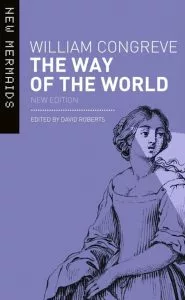“The Shadow Lines”: Contextual Significance of Amitav Ghosh’s Symbolism of Maps and Mirrors

“It took those people a long time to build that country; hundreds of years, years and years of bloodshed and war. Everyone who lives there had earned their right to be there with blood…… They know they’re nation because they’ve drawn their borders with blood…..War is their religion”
[Tha’ama in “The Shadow Lines”]
According to historians and sociologists, the elusive concept of “nationalism” is largely debatable but the most generalized definition provided in Oxford dictionaries for this term states that “Nationalism is an ideology that demands the consolidation of the people of common origin, race, ethnicity, religion, culture, tradition, and language into one sovereign nation” but in the multi-religious, multi-ethnic, multi-cultured, multi-traditional and multi-linguistic country like India that is also socially stratified in terms of caste and socialized in terms of gender, how can people be consolidated into one nation or how can they be forced to consolidate themselves into one nation? However, post-independence, Indian nationalists managed to preserve and accommodate the “Unity in Diversity” of India even after accepting linguistic basis for the internal reorganization of states but can’t effectively counterbalance the anxieties of communalism on large in India.
Ghosh’s “The Shadow Lines” scrutinizes these humanly-defined boundaries between nations that are the product of nationalism and the foundation of communalism between nations on the large scale. The present paper is a modest attempt to interpret the symbols of maps and mirrors in “The Shadow Lines.”
Sensitively investigating and criticizing the impracticality of the transient man-made national boundaries, Amitav Ghosh’s “The Shadow Lines” is a post-colonial narrative that extensively illustrates how the intrinsically futile geopolitical borderline between two nations functions as a cultural diplomatic weapon to determine one’s national identity and propagate nationalist political ideas which eventually widens the communal tensions between them. Recounting the historical events like Partition of India and Communal Riots of Bengal 1963-64, Ghosh demonstrated the illusory or shadowy character of these cartographic demarcations which generate a sense of suspicion and disillusionment on both sides by building subjective and psychological divisions between citizens instead of integrating nations.
Amitav Ghosh utilized the symbolism of maps and mirrors to delineate historiographic borderlines that indefinitely aggravate terrifying communal violence between nations only because of its psychological acceptance and existence in the mentality of citizens on both sides. Through this rational spectrum, he cross-examined the arbitrary concept of nationalism and the meaning of political freedom in postcolonial India. He further enlarged this symbolism to signify “the transition from youth to maturity, past to present” and to withstand the detrimental impacts of national perimeters to bridge the gap between oneself and one’s image in the mirror.
Ghosh claimed that the shadowy national borderlines are inherently unstable and arbitrary since it originates from different nationalist beliefs and religious affinities; these lines only invent divisions between nations and cause baseless communal violence because of its mental existence. Therefore, when Tha’ama is incapable to discover the unique, perceptible division between India and East Pakistan, she encapsulates–“But if there aren’t any trenches or anything, how are people to know? I mean where is the difference then? And if there is no difference then both sides are the same.” Through Tha’ama’s dialogue, Ghosh invoked the stupidity of the political articulation of dividing countries by drawing lines on the land. In this sense, he interrogated the meaningless endeavor of politicians of bringing emotional and psychological ridge between people and nations. The narrator raised the similar perspective in clearer words when he was interpreting Bartholomew’s atlas- “They have drawn their borders, believing in the pattern, in the enchantment of lines, hoping perhaps that once they etched their borders upon the map, the two bits of land would sail away from each other like the shifting tectonic plates of the prehistoric Gondwanaland”
Not only these lines are transitory but also a permanent origin of apprehension and disillusionment for the citizens existing on both sides. These geopolitical borderlines are the reason and result of inevitable violence and therefore Tha’ama commented-“ They know they’re nation because they’ve drawn their borders with blood.” Emphasizing the destructive aspect of these lines, the narrator unveiled the stark reality of these man-made boundaries- “I believed in the reality of the borders; I believed that distance separates, that there is a corporeal substance; I believed that across the border they exist anonymity. The only relationship my vocabulary permitted between two separate realities was war or friendship.” After the pivotal incident of Tridib’s reckless death, the narrator realizes the intensity of hatred and bitterness that those deeply acknowledged markers of national identity have created. He discerned that these rigidly demarcated lines are so terrifying that people can’t distinguish between a lawbreaker and an innocent. The incident of Tridib’s death in Dhaka precisely became a political reality for the narrator that had incapacitated the cultural integrity of India and East Pakistan.
Interestingly Ghosh had captured the abstract concept of freedom in the novel juxtaposing past and present. Tha’ama is in pursuit of political freedom while Ila is seeking freedom from the patriarchal, restrictive and impositional customs and even Robi is craving for freedom from the nightmarish memory of Tridib’s death. But realistically, none could attain real freedom- Tha’ama could not understand that national liberty can’t authenticate an individual’s personal liberty and therefore she donated her gold chain to finance the war even after her nephew’s demise while Ila rejected conservative Indian tradition and shifted to London to be free but she seems rejected by the new tradition as she experienced racial discrimination in her European school and infidelity in her marital relationship with Nick. Robi can’t set himself free as he quotes – “If freedom were possible, surely Tridib’s death would have set me free.”
Tha’ama’s futile pursuit for political freedom or more prominently national identity can never settle her emotionally because of her ever-shifting nationality. She was very closely attached to Dhaka since her childhood but after Tridib’s death, her nationalistic fervor substituted her childhood memories and she donated her gold chain. Commenting on the struggle for grandmother’s national identity, Anjali Karpe in her article “The Concept of Freedom in The Shadow Lines: A Novel by Amitav Ghosh” wrote- “The grandmother is a strong and independent woman on whom history had conferred a legacy of unflinching faith in the sanctity of political freedom.”
Ghosh had utilized the symbol of the mirror to bridge the gap between oneself and one’s image in the mirror. Mirrors symbolize the illusory space, and the projection of one’s image in the mirror has a figurative significance in the novel. Superimposing the metaphor of mirror on the meaninglessness of geographical borders, the narrator elucidates–“…. they have drawn their lines so closely that I, in Calcutta, who had to look into the mirror to be in Dhaka: a moment when each city was the inverted image of other, locked into irreversible symmetry by the line that was to set us free- our looking glass border.” The parameter of defining citizens’ national identity based on borderline has brought them closer to their nations in their imaginations because now, they don’t need to be physically present at that particular space but they are psychologically connected with the space in their recollections. Despite the invisibility of these lines, it permits people to invent their own imaginary space but still there lies a constant fear of disruptive, outrageous violence. The narrator experienced a crestfallen ominous silence of an impending war after her grandmother’s departure to Dhaka- “..it the is a special quality of loneliness that grows out of the fear of war between oneself and one’s image in the mirror.” Here, Ghosh remarked how deeply the people had acknowledged the existence of these insignificant lines that they had started to perceive the people through a hazy glass in the quest for political freedom and national identity by blatantly forgetting their moral principles and compassion.
From the above points, it is reasonable to encapsulate that Ghosh had assigned the symbol of maps and mirrors to depict the inherent fragility of borderlines that create personal and physical divisions between nations due to its visibility in the minds of people. Concluding in a simplistic sense, I would like to quote Mondal who asserted- “ The Shadow Lines probably represents Ghosh’s most direct confrontation with nationalism and national identity.”
References:
1. Ghosh, Amitav, “The Shadow Lines”
2. Karpe, Anjali, “The Concept of Freedom in ‘The Shadow Lines: A Novel by Amitav Ghosh”
3. Mondal, Sukanya, ” Reading Nationality and Other Layers of Identity in Amitav Ghosh’s The Shadow Lines”






